 |
 |
 |
| |
Changes, Patterns and Predictors of Sexually Transmitted
Infections in Gay and Bisexual Men Using PrEP - Interim Analysis from the PrEPX Study
|
| |
| |
Reported by Jules Levin
22nd International AIDS Conference (AIDS 2018), Amsterdam, Netherlands, 23-27 July 2018
M Traeger, J. Asselin, B. Price, V. Cornelisse, N. Roth, J. Willcox, B.K. Tee, C. Fairley, C. Chang,
J. Armishaw, O. Vujovic, M. Penn, P. Cundill, G. Forgan-Smith, J. Gall, C. Pickett, L. Lal, A. Mak , T. Spelman,
L. Nguyen, D. Murphy, K. Ryan, C. El-Hayek, S. Ruth, C. Batrouney, J. Lockwood, J. Hoy, R. Grant, M. Hellard,
M. Stoové* , E. Wright*, on behalf of the PrEPX Study Team
Michael Traeger, MSc(Epi)
The Burnet Institute, Melbourne, Australia
International AIDS Conference, Amsterdam, July 2018
Abstract THAC0502
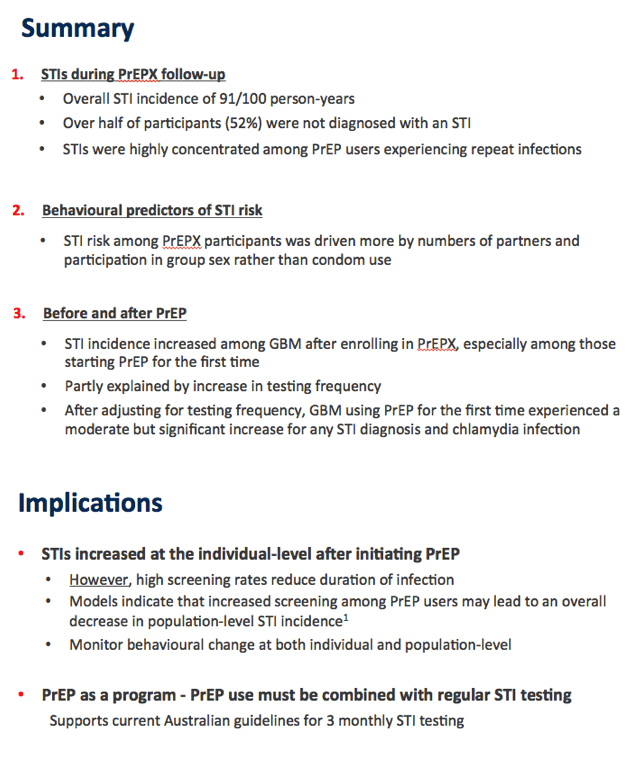
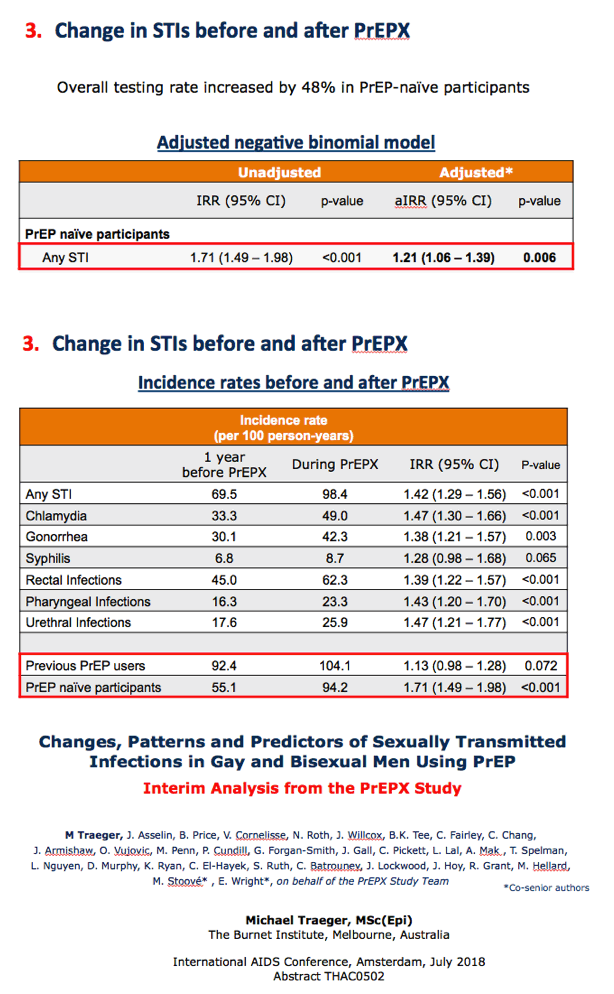

Program Abstract
Background: While there is growing evidence of increasing sexually transmitted infections (STIs) among gay and bisexual men (GBM) using PrEP, few studies have been able to measure STI incidence before PrEP commencement. We compare STI incidence among GBM before and after enrolment in the Pre-exposure Prophylaxis Expanded (PrEPX) study, a population-level, multi-site, PrEP implementation project in Melbourne, Australia, and predictors of STI diagnoses while taking PrEP.
Methods: STI testing and behavioural data from PrEPX participants attending five clinics specializing in GBM health were extracted prior to study enrolment and at scheduled three-monthly PrEP visits between July 2016-December 2017 through the Australian Collaboration for Co-ordinated Enhanced Sentinel Surveillance (ACCESS). We calculated participants'' gonorrhea, chlamydia and syphilis incidence in the year before PrEPX enrolment and during PrEPX follow-up. Incidence comparisons were calculated overall and by participants'' pre-enrolment testing frequency and self-reported pre-study PrEP use. Kaplan-Meier estimating methods and Cox proportional hazards regression explored associations between baseline and longitudinal behaviours and STI diagnosis after PrEP commencement.
Results: 2,490 participants contributed 1040.3 person-years (PY) pre-PrEPX and 1899.7 PY during PrEPX. During PrEPX, 41% of participants were diagnosed with ≥1 STI and 455 (18%) participants with multiple STIs accounted for 68% of all infections. Rectal infections were commonest (62.4/100PY). STI incidence among all participants increased significantly from 78.4/100PY pre-PrEPX to 96.1/100PY during PrEPX. Significantly elevated STI incidence was detected among participants with ≥3 test visits in the year preceding enrolment, but not among participants with ≥4 visits. STI incidence increased most among participants reporting no pre-study PrEP use. STI diagnosis and condomless receptive anal intercourse prior to enrolment were associated with increased STI risk during PrEPX (p< 0.001). Younger age (aHR=1.02/year, 95%CI=1.01-1.03), >10 casual anal sex partners (aHR=1.76, 95%CI=1.30-2.39) and group sex (aHR=1.49, 95%CI=1.10-2.03) in the past six months were associated with increased STI risk.
Conclusions: STI incidence increased among GBM in PrEPX following PrEP initiation, driven largely by GBM experiencing repeat infections. High partner turnover and group sex elevated STI risk. Our findings support ongoing and frequent STI screening alongside education on early identification of STI symptoms for PrEP users, especially among those exhibiting multiple STIs and high-risk behaviours.
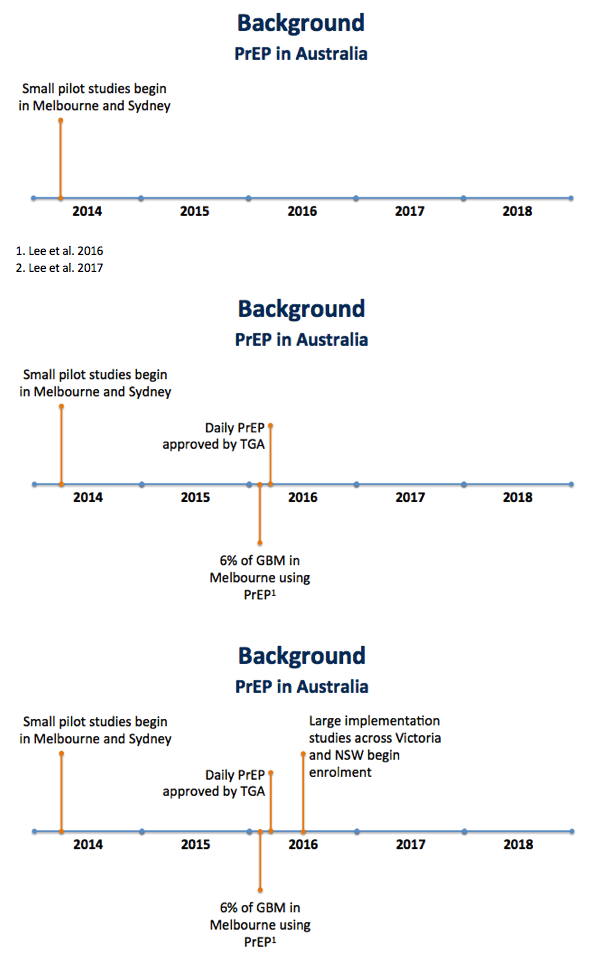
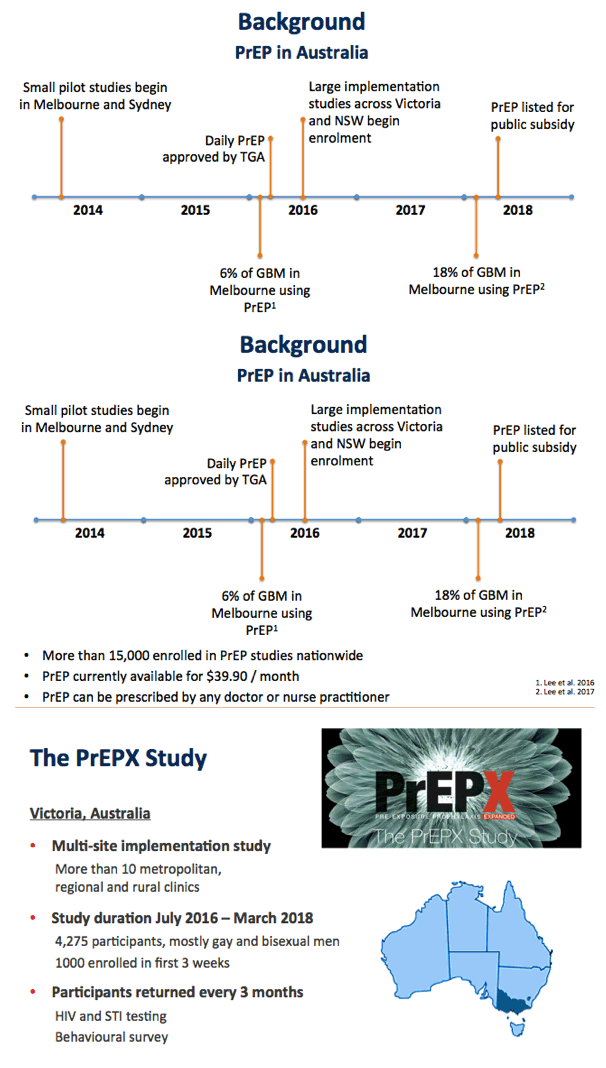
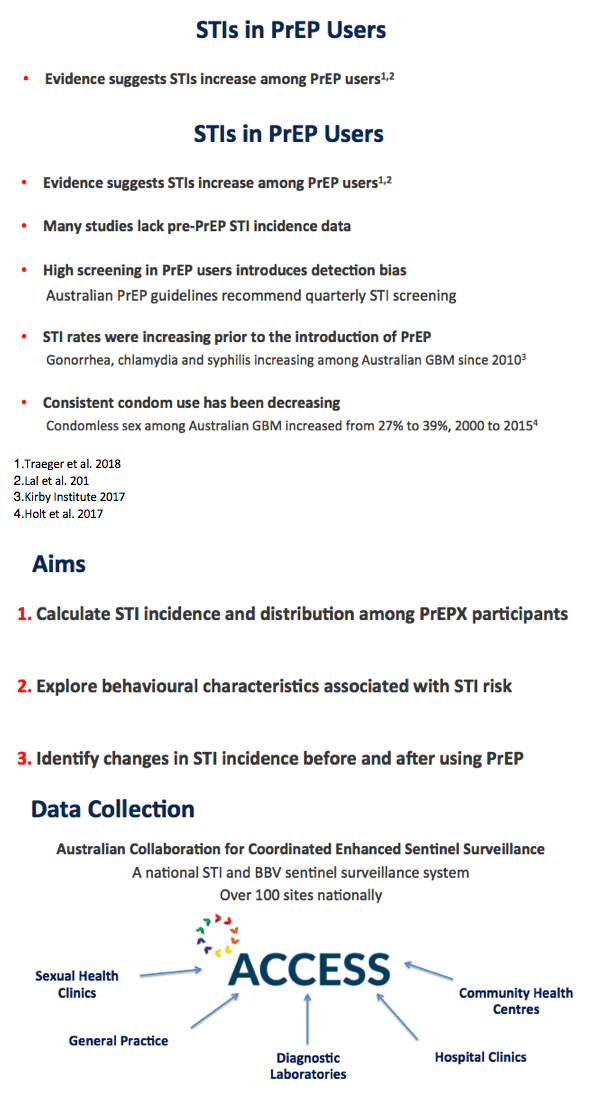
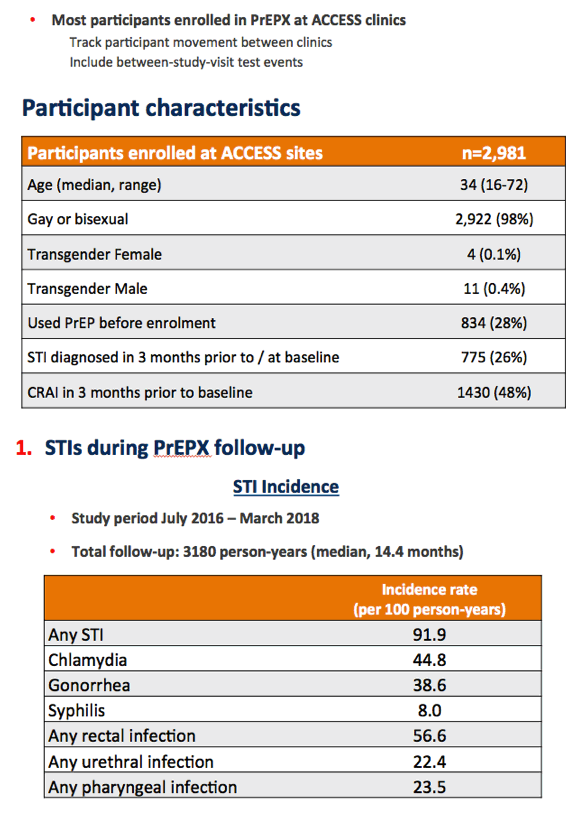
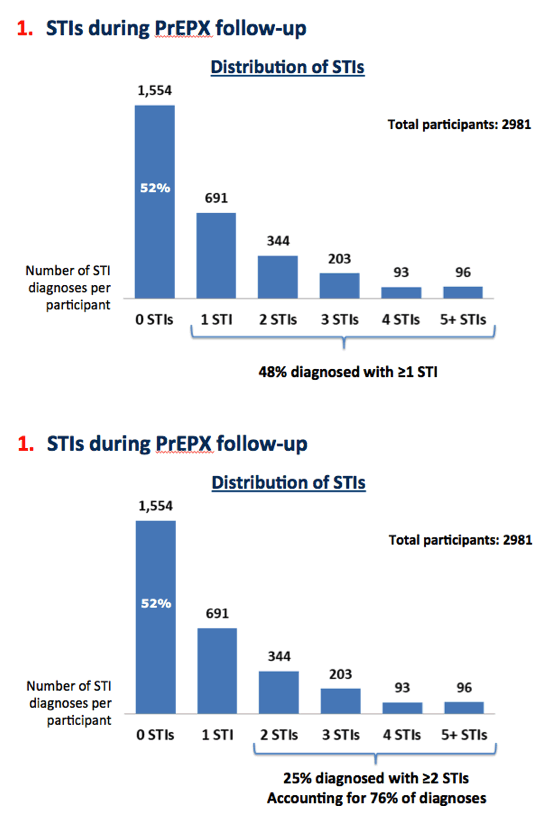
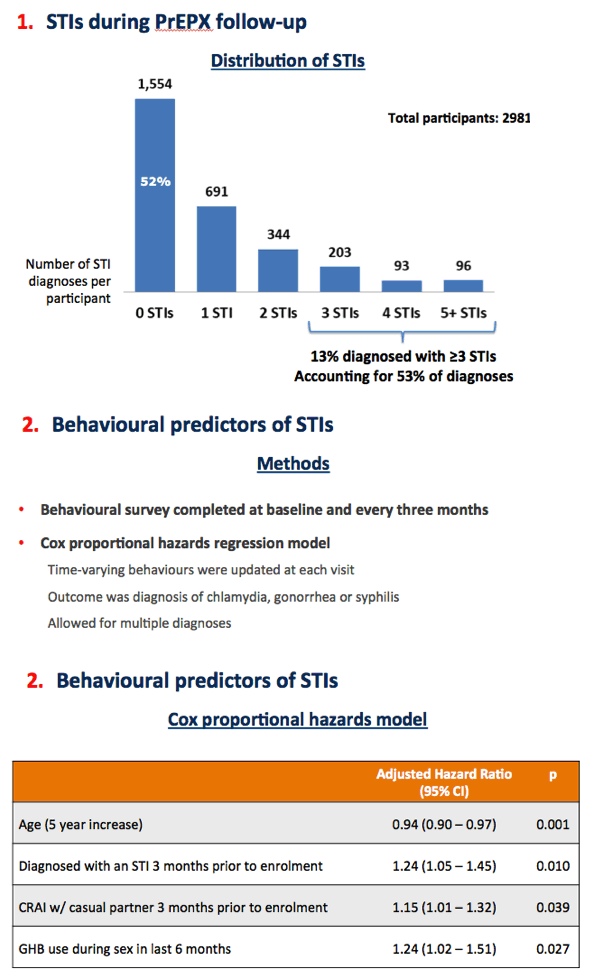
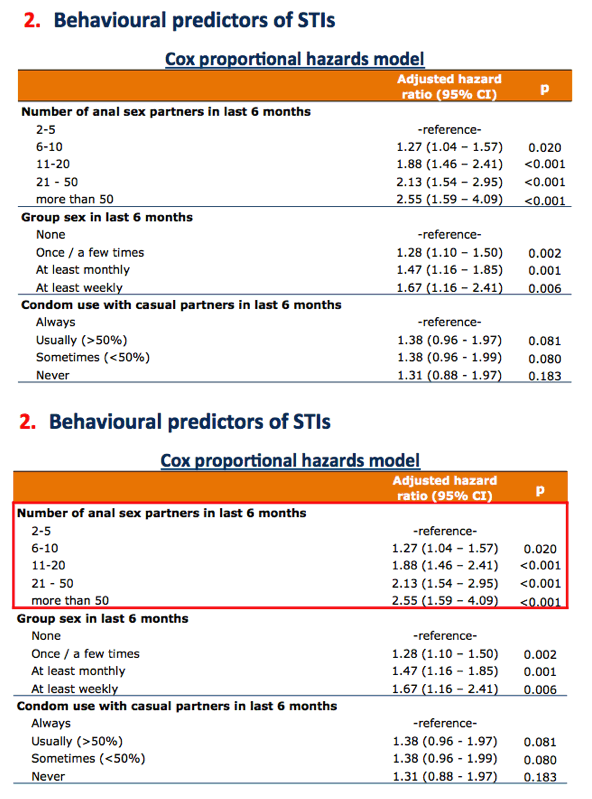
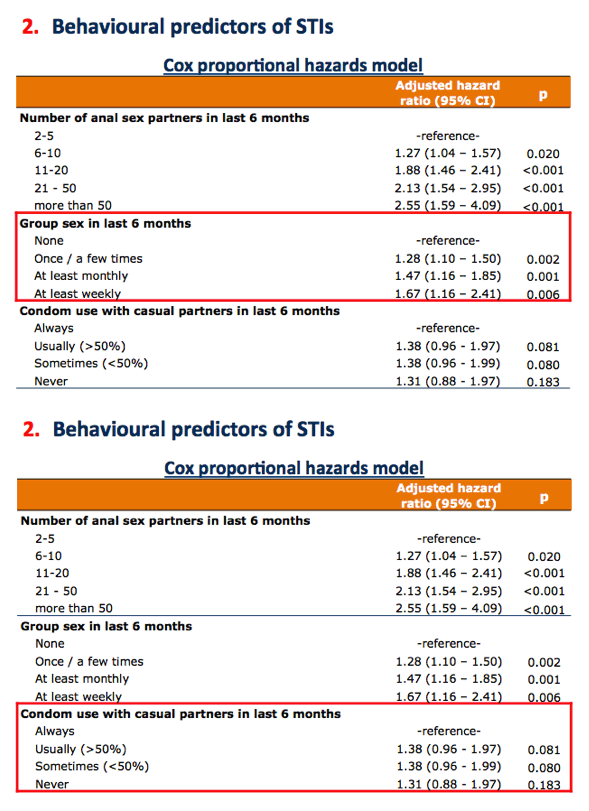
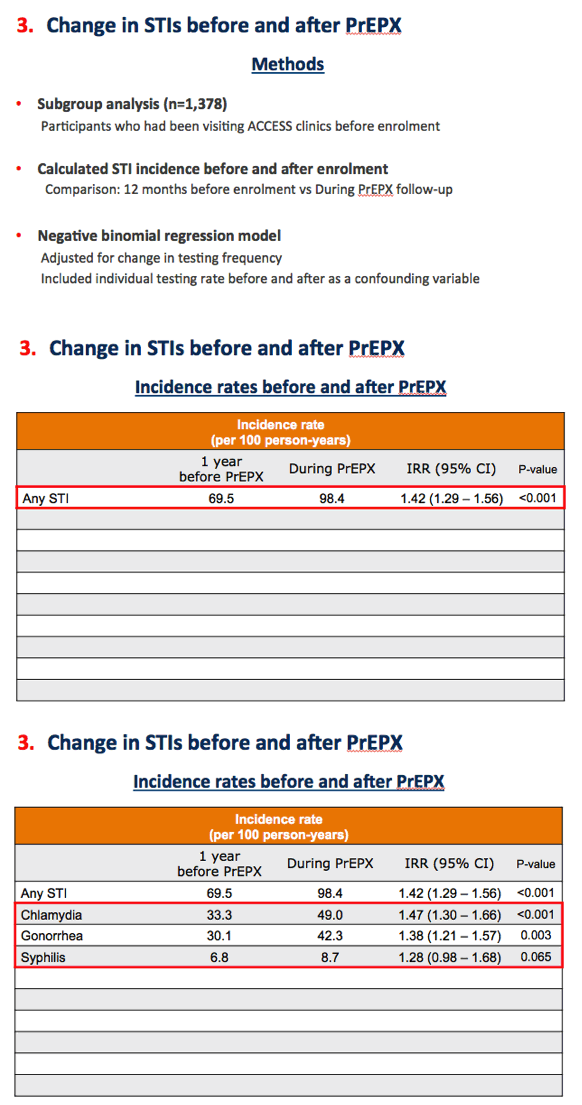
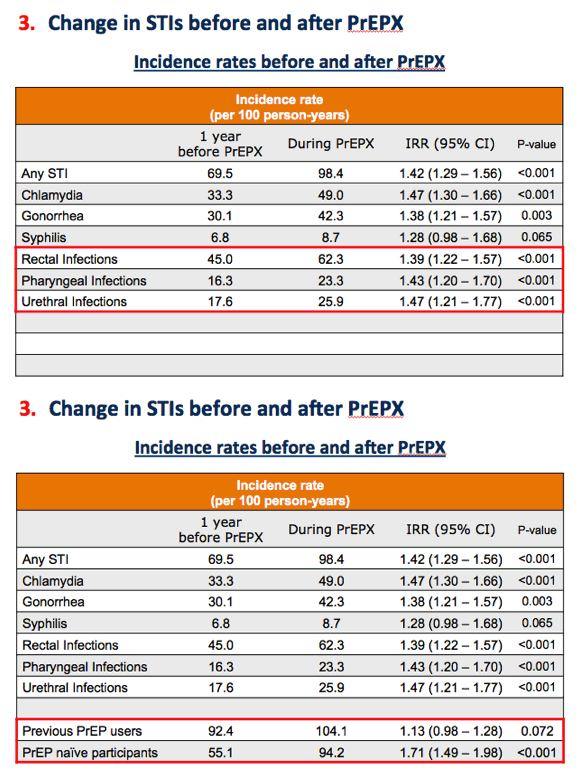
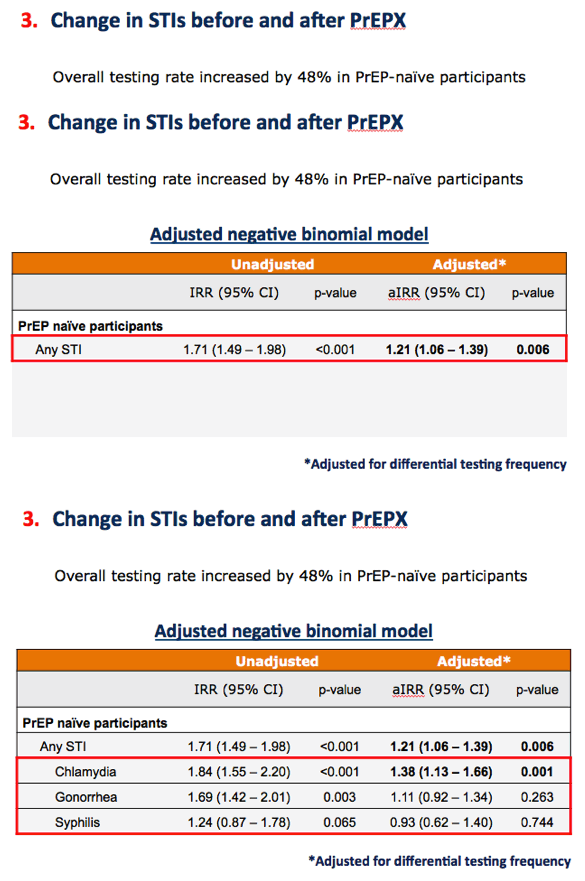
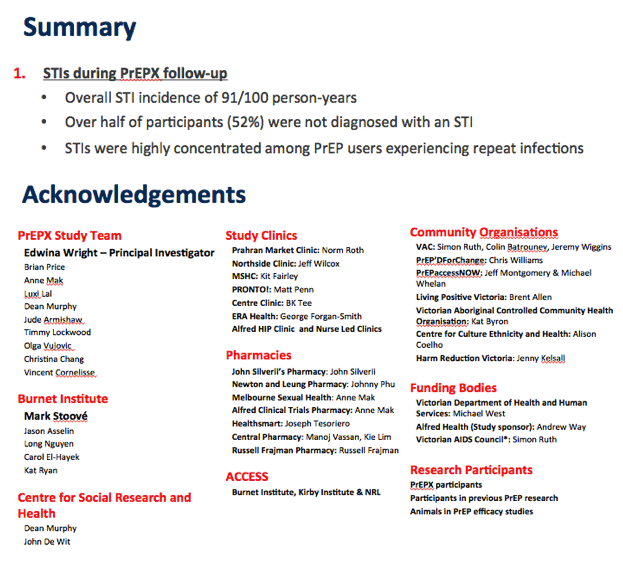
|
| |
|
 |
 |
|
|